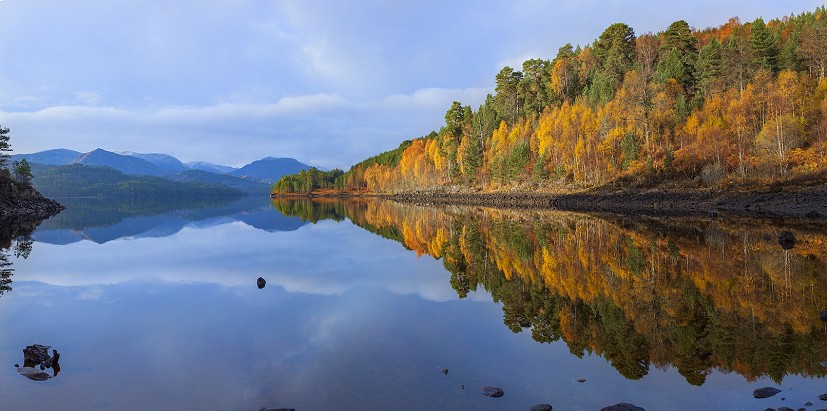Huge re-wilding project launched in Highlands
An ambitious 30-year 'landscape-scale' rewilding project to create a nature recovery area connecting Loch Ness to Kintail on Scotland's west coast was launched yesterday by conservation charity Trees for Life.
Bringing together a coalition of local communities, 20 landowners and six organisations, the Affric Highlands initiative will work to restore the environment across a network of landholdings in Glens Cannich, Affric, Moriston and Shiel, where natural processes will be allowed to evolve at scale. If other landowners and communities can be brought on board, the hope is that the project could eventually cover more than 500,000 acres of mountain, loch and forest.
By linking existing rewilding projects, the idea is to improve habitat connectivity and species diversity across a vast contiguous area, while also boosting social and economic opportunities in the region, and helping to tackle climate breakdown.
During a ceremony in Drumnadrochit by Loch Ness on 23 September, Affric Highlands was officially welcomed by Rewilding Europe as the ninth member of its network of large pioneering rewilding areas, which already include Swedish Lapland, the Central Appenines, and Romania's Southern Carpathians.
"Affric Highlands will take large-scale nature recovery to a new level, providing a catalyst for the local economy at the same time," said Steve Micklewright, Chief Executive of Trees for Life.
"The Highlands have huge potential to help nature to come back and so help people to thrive, and to make a leading contribution to tackling the global climate and nature emergencies. We are delighted Affric Highlands is now one of Rewilding Europe's large rewilding areas that are inspiring hundreds of other rewilding projects across the continent."
Experience across the world has shown that improving habitat conditions and reconnecting natural processes at a large scale not only brings back wildlife, Trees for Life argue, but also the growth of natural resources for sustainable economic use.
Changes in the landscape in the project area will be gradual, they say, with expanding patches of denser and more open woodland. Varied habitats will lead to greater biodiversity, but the project is not a monolithic effort.
"Landowners can choose from a wide range of options to build on the achievements of traditional land management to date" explains the project website.
"The intent is not to replace today's land uses but to sustain their practical, cultural and economic benefits and to add other beneficial uses to them. Peatland restoration, regenerative livestock grazing, tree planting, deer control and fencing are some of the main management techniques that can contribute to increasing the potential in the project.
"We do not envisage a project-wide land management plan, rather each landowner continues to make their own decisions on how to manage the land and progresses at a pace they are comfortable with. Not everywhere needs to move at the same speed."
Over the last three decades Trees for Life has established nearly two million native trees in a bid to restore the native Caledonian forest at its own 10,000 acre estate at Dundreggan in Glenmoriston, and at dozens of other sites in the Highlands, including Glen Affric.
In 2023, Dundreggan will become home to the world's first Rewilding Centre, which aims to demonstrate the many ways large-scale nature recovery can benefit people.

